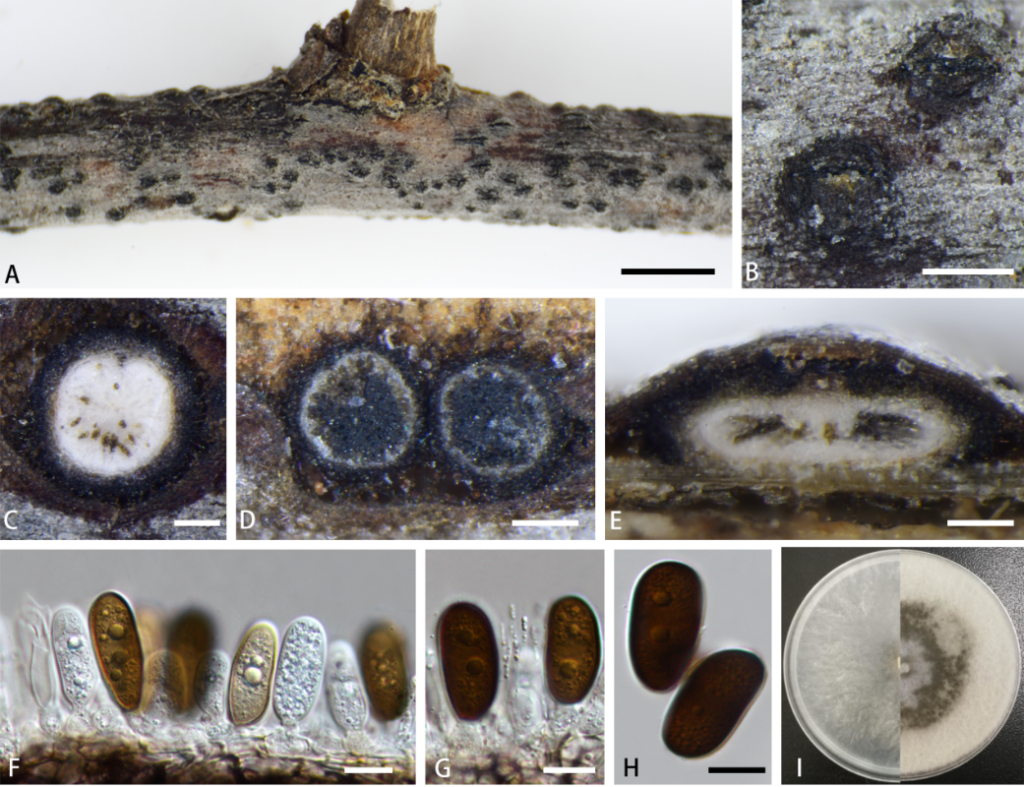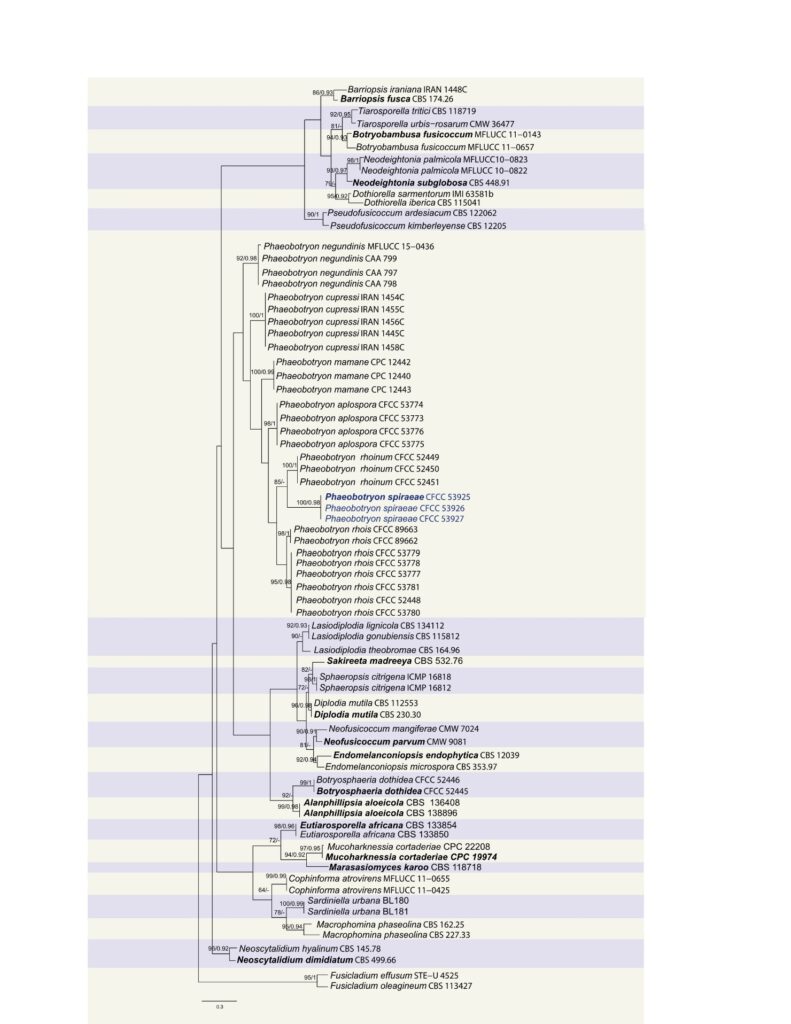Phaeobotryon spiraeae L.X. Zhang & X.L. Fan sp. nov. (Fig. 18)
MycoBank number: MB 558666 ; Index Fungorum number: IF 558666 ; Facesoffungi number: FoF 10495;
Holotype: CF 20186828
Etymology: Named after the host genus on which it occurs, Spiraea salicifolia.
Sexual morph: Undetermined. Asexual morph: Conidiomata pycnidial, stromatic, scattered to gregarious, multiloculate, immersed to erumpent from bark surface. Locules multiple, irregular arrangement with common walls, (430–)530–695(–780) μm (av. = 580 μm, n = 30) in diam., ectostromatic disc and ostiole inconspicuous. Conidiophores reduced to conidiogenous cells. Conidiogenous cells hyaline, smooth, thin-walled, cylindrical to doliiform, holoblastic, phialidic, formed from the cells lining the inner walls. Conidia initially hyaline, becoming dark brown, aseptate, smooth with granular contents, guttulate, thick-walled, oblong to cylindrical, straight, both ends broadly rounded, (21.0–)23.5–28.5 × 8.5–13.5 μm (av. = 26.5 × 10.5 μm, n = 50).
Material examined: China, Beijing City, Huairou District, Labagoumen Primeval Forest, from Spiraea salicifolia, June 2018, X.L. Fan, CF 20186828 holotype, ex-type living culture CFCC 53925.
Other material examined: China, Beijing City, Huairou District, Labagoumen Primeval Forest, from Spiraea salicifolia, June 2018, X.L. Fan, CF 20186829 isotypes, ex-isotype living culture CFCC 53926; ibid. CF 20186830, living culture CFCC 53927.
Notes: The new collection from Spiraea salicifolia is morphologically and phylogenetically distinct from extant species, thus we introduce it as a new species.

Figure 18 – Phaeobotryon spiraeae (CF 20186828, holotype) from Spiraea salicifolia. A, B. Pycnidia on a twig of Spiraea salicifolia. C, D. Transverse section of conidioma. E. Longitudinal section through conidioma. F, G. Conidia attach to conidiogenous cells. H. Conidia. I. Cultures on PDA, surface and reverse views. Scale bars: A = 2 mm; B = 500 μm; C = 100 μm; D–E = 150 μm; F–H = 10 μm.

Figure 19. The best scoring RAxML tree with a final likelihood value of -22601.460384 for combined dataset of ITS, LSU, tef1 sequence data. The topology and clade stability of the combined gene analyses were compared to the single gene analyses. Numbers above the branches indicate ML bootstraps (left, ML BS ≥ 50%) and Bayesian Posterior Probabilities (right, BPP ≥ 0.90). The tree is rooted with Fusicladium effusum (STE-U 4525) and Fusicladium oleagineum (CBS 113427). The matrix had 929 distinct alignment patterns with 27.43% undetermined characters and gaps. Estimated base frequencies were as follows: A = 0.228527, C = 0.263570, G = 0.278846, T = 0.229057; substitution rates: AC = 1.250159, AG = 2.344965, AT = 1.178390, CG = 1.445313, CT = 4.419963, GT = 1.000000; gamma distribution shape parameter α = 0.259595. The newly generated sequence is in blue. Ex-type strains are in bold. “-” indicates ML BS < 50% or BI PP < 0.90.
